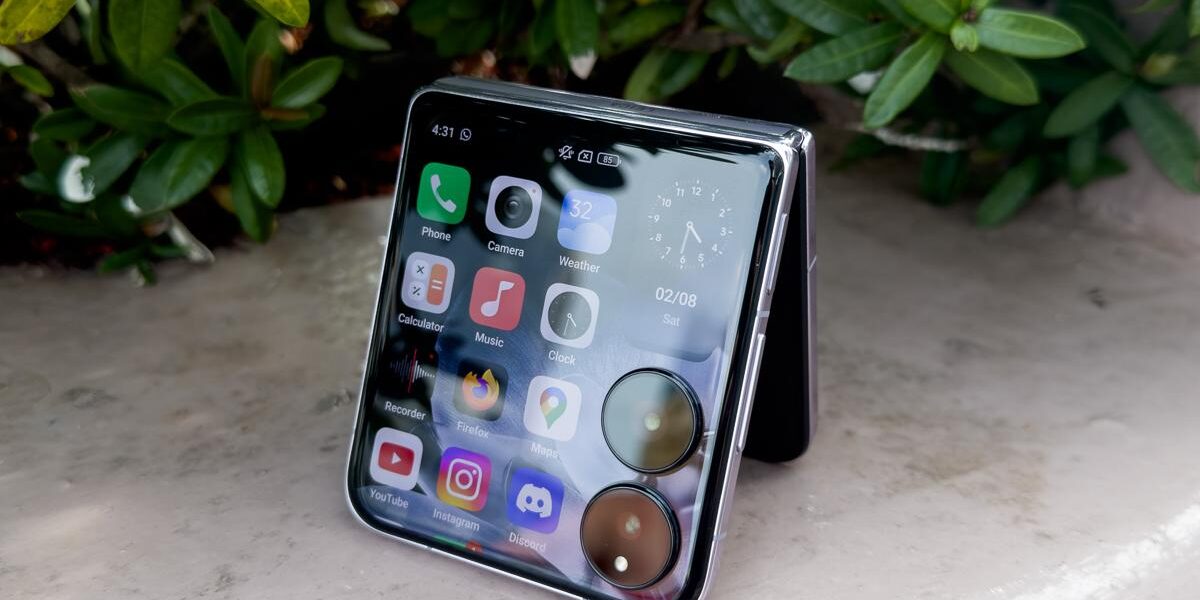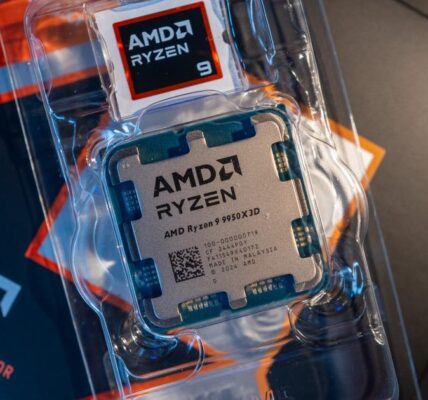Xiaomi Mix Flip review: Almost the ideal flagship clamshell phone
Note: This review was first published on 25 February 2025.

Xiaomi mixing things up
We’ve seen our fair share of clamshell foldables, from Samsung’s Galaxy Z Flip6 to the Find N3 Flip.
While the form factor has evolved slowly over the years, Xiaomi decided it’s time to take the lead with the Xiaomi Mix Flip.
This clamshell foldable packs flagship specs like a Qualcomm Snapdragon 8 Gen 3 processor and dual 50MP LeicaVario-Summilux rear cameras. The outer screen is also all-display and no-nonsense. The 4.01-inch panel wraps around the cameras and offers significantly more screen real estate than other competitors.
The TL;DR version:
Rock-solid build mixed in with flagship components and a large battery. Xiaomi has almost knocked it out of the park with its first attempt at a clamshell foldable.
Note: Find it at Xiaomi Authorised Stores around Singapore, or on Lazada and Shopee.
In addition, the Xiaomi Mix Flip comes with a large 4,780mAh battery that supports 67W wired HyperCharge, the latest LPDDR5X RAM, and UFS 4.0 storage.
The best part? The Xiaomi Mix Flip costs just S$1,499, which is the same price as the OPPO Find N3 Flip, except it’s for the 12GB+512GB configuration, while the Find N3 Flip costs the same for just 256GB of storage (Galaxy Z Flip6 costs even more).
Xiaomi’s Mix Flip adopts a stronger value-for-money slant while staying true to its flagship tenets. However, can its clamshell phone come together as a cohesive unit to make its competitors fold up? Let’s find out.
|
Xiaomi Mix Flip |
|

|
|
| Launch SRP | |
|---|---|
| Network: | |
| Operating system | |
| Processor |
|
| Built-in Memory | |
| Display |
|
| Camera |
|
| Video Support | |
| Connectivity |
|
| Storage Type |
|
| Battery |
|
| Dimensions |
|
| Weight |
Surprisingly refined

It’s surprising that Xiaomi produced such a refined design despite doing it for the first time. I’m not expecting them to suck, but I remember it took other brands many iterations to perfect theirs. The construction, especially the aluminium frame, feels quite solid.
My one quibble is that the glossy finish is a major fingerprint magnet, but I can understand it provides some contrast to the matte finish of the rear glass.
The dual-link hinge, rated for 500,000 folds, is also colour-matched with a relatively low profile, not protruding too much from the phone.
If anyone’s keeping tabs, the hinge rating is higher than Samsung’s Galaxy Z Flip6’s 200,000 folds but falls a little short of OPPO’s Find N3 Flip’s 600,000. At an estimated 100 unfolds a day, you can use the Mix Flip for 5,000 days, or approximately 13.6 years.

There are a few buttons on the right side. The power button doubles up as a fingerprint reader, next to its volume rocker. The fingerprint sensor is surprisingly accurate and quick compared to others who adopt the same placement.

We get a large 6.86-inch 1.5K LTPO AMOLED CrystalRes main display with an adaptive refresh rate of 1-120Hz, a peak brightness of 3,000 nits, and 2160Hz PWM + DC dimming. While the crease isn’t completely gone, it’s only visible if you tilt the phone at extreme angles or look at it from the side. If you’re facing the phone, you can’t really see the crease, even though you can feel it when you run your finger across the display.
The bezels on the side of the main display are relatively thin, but they are nowhere near as thin as those on a regular smartphone.

On the outside, the 4.01-inch 1.5K CrystalRes outer screen uses the same C8+ material as the main display, and it offers almost the same specs as well, with a 3,000-nit peak brightness and up to 120Hz refresh rate, along with DC dimming. Since this display is more about practicality than quality, we put it to the test below.
The most functional outer screen

I think Xiaomi Mix Flip’s biggest selling point is its outer screen.
While other competitors cram widgets and mini-apps into the screen and only allow suggested replies, Xiaomi took it one step further by offering nearly full apps you’d find on regular phones. You can even open Chrome or your browser and browse the web directly from the outer screen.

We tested apps like Firefox, Telegram, WhatsApp, YouTube, Google Maps, Discord and TikTok, and they all worked perfectly. Sadly, Mix Flip had to position the app content to its left so the cameras’ housing wouldn’t block it.
Xiaomi has smartly designed the screen to give it a widget carousel on the right, making good use of the small vertical space above the cameras. The widgets are relatively standard, and you can choose from options like a weather widget, clock widget, calendar widget, and more.
This makes the Xiaomi Mix Flip’s outer screen incredibly productive and helpful since you’ll be able to take advantage of the extra screen real estate and do more. It would be even more amazing if the camera rings were small, like the Galaxy Z Flip6’s.
Hampered by the software
The Xiaomi Mix Flip comes with Xiaomi’s HyperOS operating system out of the box. You can update to HyperOS 2. Generally, it’s not a bad experience.

The UI is well-thought-out, and Xiaomi has taken many design cues from Apple’s iOS. Unfortunately, the Mix Flip’s major downfall is the sheer number of ads and notifications (it’s worse when you first set up the phone).
One way to avoid this is to uninstall unwanted first-party apps or disable notifications, such as Music, Game Center, GetApps, and more. It would be better if weren’t necessary in the first place or if the notifications were opt-in and not out.
As usual, we are promised four years of OS updates and five years of security updates, which is a reasonably long period.
Imaging performance

There are only two cameras on the outside of the phone:
- 50MP main camera (1/1.55-inch, f/1.7 aperture, ddual-pixelPDAF, OIS)
- 50MP telephoto camera (2x optical zoom, 1/2.61-inch, f/2.0 aperture, PDAF, OIS).
Using a telephoto lens here is an interesting choice, as most of Mix Flip’s competitors only have two lenses (Samsung Galaxy Z Flip6 5G, Tecno Phantom V Flip 5G). Also, these alternatives typically offer an ultrawide lens instead.


Xiaomi’s collaboration with Leica extends to the Mix Flip, rocking Leica-branded cameras and the usual choice between the Leica Authentic and Leica Vibrant processing.
The difference between the Authentic and Vibrant options is clear, as is evident in our previous reviews of Xiaomi devices.
We prefer the look of the Leica Authentic processing, so all our images shown here are with that option. However, we felt that the vignetting for Leica Authentic was a bit stronger on Mix Flip than on other Xiaomi phones. If you do not like the look, you’re better off sticking to Leica Vibrant.






The main camera pixel-bins to 12.5MP by default, providing some excellent images. Photos retain good detail and sharpness while looking natural with nice colours. It seems to excel at greenery and not animals, especially considering the cat’s fur and detailing are just as intricate (if not more).










The 2x optical zoom performs well in brightly lit situations as well. Check out the detail in the cat’s fur. As for the 4x hybrid zoom, it’s not quite as sharp, but the photos are still perfectly usable.



Low-light images are also nicely brightened, with decent dynamic range, although very dark areas without any lights nearby get a little soft and smudged.
Benchmark performance
The Xiaomi Mix Flip uses the flagship Qualcomm Snapdragon 8 Gen 3, so we do expect good results in our benchmarking tests. We’ll compare the phone against other clamshell foldable competitors and other flagship devices around the same price range.
Putting it to the test
To find out how the competitors line up specs and price-wise, check them out in this link.
To find out more about the tests we conduct and what they relate to, we’ve jotted them down here.




Benchmark Performance remarks
The phone performed quite decently against competitors. While the numbers might not be as high as those of other flagship devices, general everyday usage was smooth, with no lagging or stuttering. Games like Honkai: Star Rail played smoothly, without any issues.
Battery Life
Our new battery benchmark uses PCMark for Android’s Work 3.0 Battery Life test to determine a modern Android-based smartphone’s battery uptime in minutes. This controlled benchmark simulates real-world usage with a combination of both web and social media browsing, video and photo editing, parsing data with various file formats, writing (on documents), and more.

The 4,780mAh battery inside the Mix Flip is one of the largest in clamshell foldable phones, and the battery life test results show it. It provides slightly more than 16 hours of uptime.
One significant advantage of the Xiaomi Mix Flip is the quick 67W wired charging speeds. It managed to get a 50% charge from 0% in just 27 minutes. A full charge takes longer than typical one-hour charging in Chinese flagship phones, clocking in at 79 minutes.
Unfortunately, this foldable phone has no wireless charging, which is a shame. Competitors, like the Samsung Galaxy Z Flip6, do.
Conclusion

For a first attempt, the Xiaomi Mix Flip is an excellent product. The software has a few shortcomings, but the hardware in the phone is commensurate with the price.
At S$1,499, you’ll get a clamshell foldable phone with a Qualcomm Snapdragon 8 Gen 3 processor, fast LPDDR5X RAM, and UFS 4.0 storage. It also has a big 4,780mAh battery that supports 67W fast charging and large, bright inner and outer displays. If it had eSIM support, it would have been a fantastic flip phone for anyone who wants performance and form factor rolled into one device.
Core to flip phones are the extra functionalities, and Xiaomi Mix Flip’s outer display is more practical than many other competing devices. While most people will be unfolding their phones for a good part of the day, you can still squeeze in crucial phone usage since music streaming, messaging, web browsing, and navigation are on the small panel, making it ideal for dropping in and out of chores.

The cameras aren’t too shabby. Although the ability to open the screen at different angles to take photos is not new, it’s a staple clamshell feature that Xiaomi has done well, and the large outer screen certainly makes taking pictures this way a good experience.
However, Xiaomi can improve on the next iteration of the Mix Flip. For example, an IP rating would protect the phone from rain and splashes. It also lacks eSIM support, making it less friendly to users who want to switch between different telcos or MVNOs or buy a travel SIM for roaming. Additionally, it would be great to get wireless charging support, as Samsung has proven it can be done.

Our one software quibble is the copious notifications and app promotions, which detract from the overall experience. Beyond that, there is little else that we can fault Xiaomi for.
The Xiaomi Mix Flip retails for S$1,499 in the 12GB+512GB configuration. It is available in Black or Purple at Xiaomi Authorised Stores around Singapore or on Lazada or Shopee.




